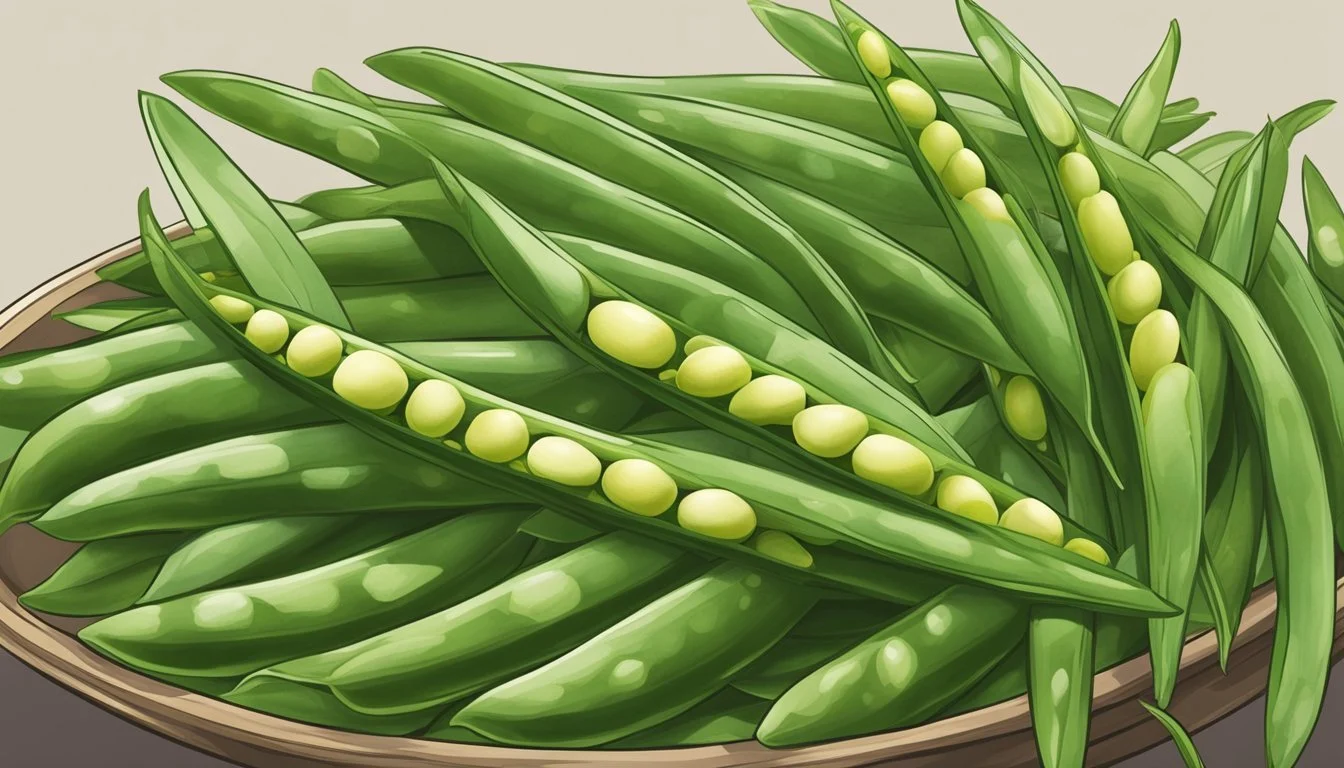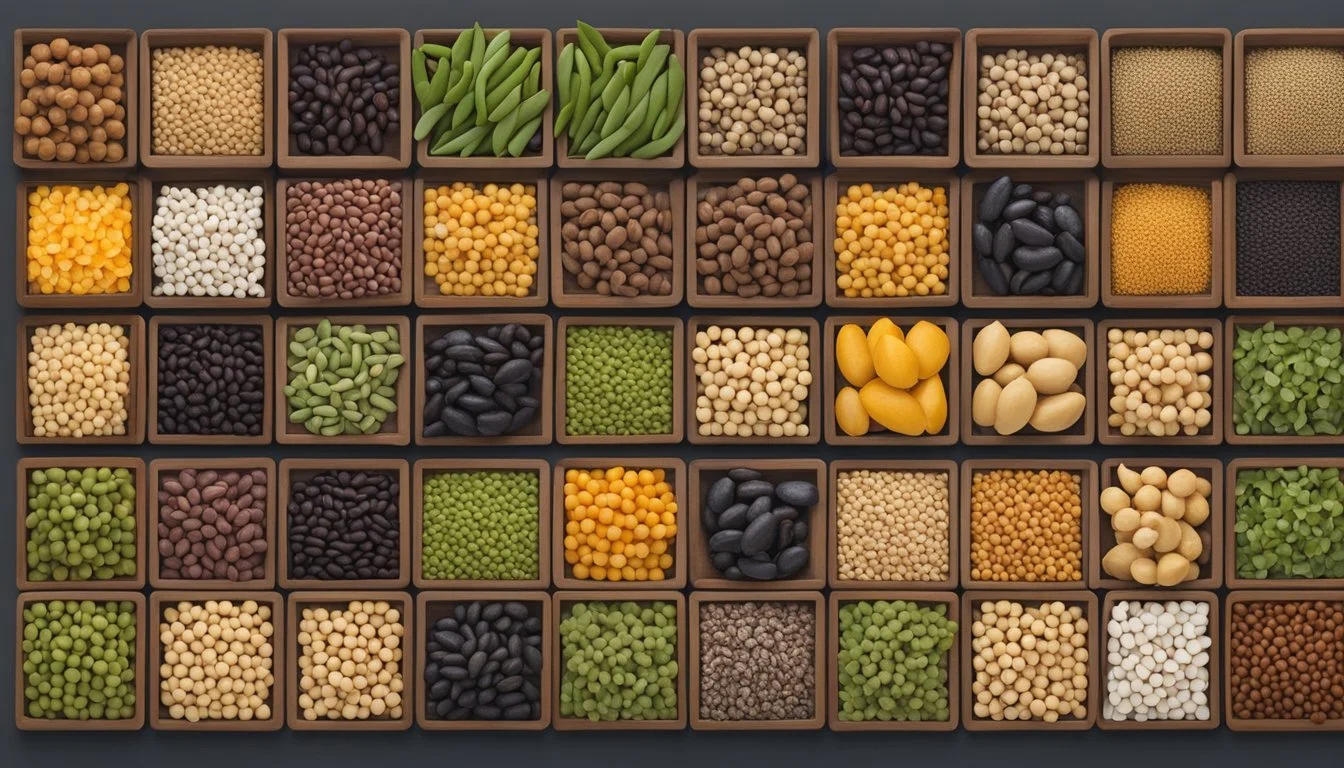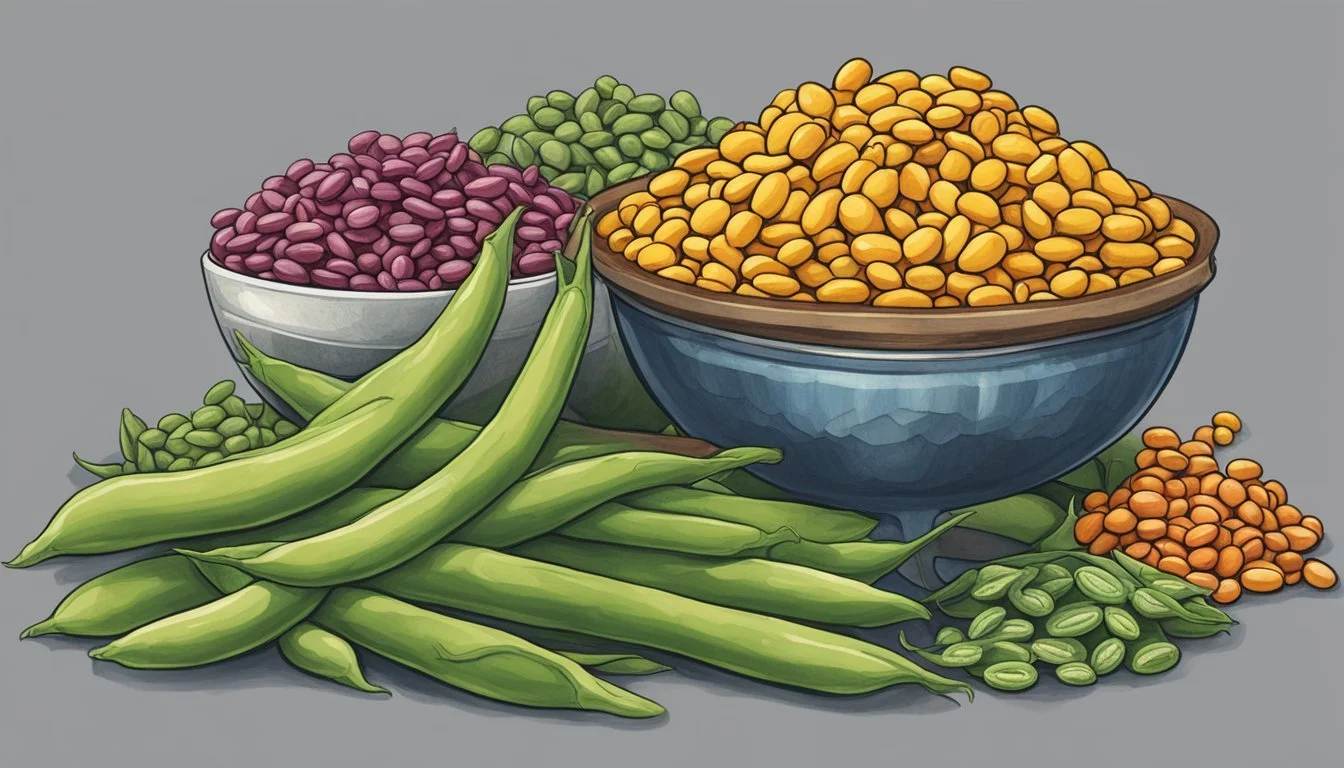Sword Beans Substitutes
Best Alternatives for Your Recipes
Sword beans, though not as widely recognized as other legumes, bring a unique flavor and texture to various dishes. For those who struggle to find these beans or wish to explore alternatives, several substitutes can effectively replace sword beans in recipes. Alternatives such as black soybeans, navy beans, or cannellini beans provide similar nutritional benefits and culinary versatility.
Each substitute brings its own distinct qualities to the table. Black soybeans, for instance, are highly suitable for low-carb diets and can be used in a wide range of dishes, from soups to salads. Navy beans, known for their creamy texture, are another excellent choice, often used in Italian cuisine and various stews. For a close match in texture and consistency, cannellini beans are also a great option, making them a versatile substitute in numerous recipes.
The availability and specific dietary needs play a crucial role in choosing the right substitute. Mushroom slices or mashed cauliflower can also offer alternative textures and flavors for those seeking something beyond traditional legumes. By exploring these alternatives, home cooks can maintain the intended taste and nutritional profile of their dishes without the need for sword beans.
Understanding Sword Beans
Sword beans, known for their unique texture and flavor profile, are a versatile legume used in various culinary applications.
These beans have a distinctive texture. When cooked, they become tender yet retain a slight firmness, adding a pleasant bite to dishes.
The flavor profile of sword beans is characterized by a nutty and earthy taste. This makes them an excellent addition to both savory and mildly sweet recipes.
Nutritional Value: Sword beans are rich in protein, fiber, and several essential nutrients. These qualities make them a nutritious option for those seeking plant-based protein sources.
Culinary Uses: Sword beans can be used in soups, stews, and as a meat substitute in vegetarian dishes. Their nutty flavor pairs well with a variety of spices and herbs.
In terms of preparation, sword beans require soaking and boiling to reduce cooking time and enhance digestibility. This process also helps to soften their texture while preserving their unique flavor.
Incorporating sword beans into meals can bring a new depth of flavor and texture, providing both culinary enjoyment and nutritional benefits.
Nutritional Profile and Health Benefits
Sword beans offer an impressive nutritional profile, rich in protein, fiber, vitamins, and essential minerals. These nutrients collectively contribute to improved health parameters, supporting various bodily functions.
Protein and Fiber
Sword beans are an excellent source of protein and fiber, crucial for maintaining energy levels and digestive health. With a high protein content, they provide essential amino acids, which are vital for muscle repair, immune function, and enzyme production.
Fiber in sword beans aids in maintaining a healthy digestive system by promoting bowel regularity. High fiber intake is associated with lower risks of cardiovascular diseases and better weight management.
For vegetarians and vegans, sword beans are a valuable protein source, especially given their fiber content’s role in reducing blood sugar spikes by slowing carbohydrate absorption.
Vitamins and Minerals
These beans are packed with essential vitamins and minerals. Key vitamins found in sword beans include vitamin C, thiamine (B1), and riboflavin (B2). Vitamin C boosts the immune system and acts as an antioxidant, protecting cells from damage.
Thiamine and riboflavin play critical roles in energy metabolism and maintaining neurological health. Thiamine helps convert carbohydrates into energy, while riboflavin supports cellular energy production.
Sword beans are also rich in minerals like iron, calcium, and phosphorus. Iron is vital for oxygen transport in the blood, calcium is essential for bone health, and phosphorus aids in forming bones and teeth. Including sword beans in the diet ensures a diverse intake of vital nutrients promoting overall well-being.
Preparing Sword Beans
Sword beans, known for their slightly nutty taste and firm texture, require careful preparation.
Soaking
To reduce cooking time and enhance texture, soak sword beans in water. Place the beans in a large bowl and cover with water, ensuring it’s at least twice the volume of the beans. Soak for 8-12 hours.
Draining and Rinsing
After soaking, drain the beans and rinse them under cold water. This helps remove any residual phytic acid and makes the beans easier to digest.
Cooking
Transfer the rinsed beans to a large pot and cover with fresh water. Bring the water to a boil, then reduce to a simmer. Cook for 1-2 hours until the beans are tender.
Tips for Optimal Texture
Avoid adding acidic ingredients, such as tomatoes or vinegar, during the initial cooking phase as they can toughen the beans. Adjust pH later in the cooking process.
Uses
Sword beans can be used in a variety of dishes, including stews, soups, and salads. They absorb flavors well, making them adaptable to different cuisines.
Culinary Uses of Sword Beans
Sword beans are versatile legumes used in various traditional and modern culinary practices across different cultures. They are popular in soups, stews, and as vegetables, offering a nutritious option with a unique texture.
Traditional Dishes
Sword beans are widely used in India, Japan, and Korea. In India, they are incorporated into steamed dishes and curries. Known as "chikkudu," they are often cooked with spices and coconut, adding a flavorful element to meals.
In Japan, young sword bean pods are pickled and served as side dishes, enhancing meals with their crunchy texture. In Korea, known as "komame," sword beans are used in jeon (pancake) dishes, mixed with vegetables, and sometimes used in traditional stews.
Modern Recipes
Modern culinary uses of sword beans include their addition to casseroles and salads. They can be creatively used as a meat substitute in veggie burgers. These beans are also blended into smooth soups for a creamy texture.
Marinated and grilled sword beans provide a unique twist on plant-based proteins for barbecue dishes. They can also be baked with herbs and spices to create crispy, flavorful snacks. Integrating them into these various applications opens up new possibilities for their use in contemporary cuisine.
Sword Beans Substitutes Overview
Sword beans can be difficult to find, so knowing suitable substitutes can be helpful in various recipes.
Popular Substitutes
Navy Beans: Often used in soups and stews, navy beans have a mild flavor and creamy texture. They are easy to find and cook quickly.
Pinto Beans: Known for their versatility, pinto beans have a slightly nutty taste that works well in chili, tacos, and salads.
Kidney Beans: With a robust flavor and firm texture, kidney beans are great for salads, soups, and casseroles.
Nutritional Profile
Most bean substitutes are rich in fiber and plant-based protein. For example, navy and pinto beans typically offer around 6 grams of fiber per serving. This makes them excellent for gut health and bowel regulation.
Cooking Tips
Preparation: Soak beans overnight to reduce cooking time.
Flavoring: Enhance flavor with herbs, spices, and vegetables.
Texture: Adjust cooking times to achieve desired texture, especially in soups or stews.
Versatility in Recipes
Different beans work better in specific recipes. Kidney beans excel in hearty dishes, while navy beans are perfect for lighter fare. Using the right substitute can maintain the integrity of the dish.
Sourcing
Look for organic options at grocery stores or local farmers' markets. Many beans can also be found dried or canned, offering flexibility in preparation.
Using these substitutes effectively can ensure your recipes remain flavorful and nutritious, even when sword beans are unavailable.
Legume Substitutes
When looking for substitutes for sword beans, there are a variety of other legumes that can offer similar textures and nutritional benefits. These options include different types of beans and peas, as well as various lentils.
Similar Beans and Peas
Several beans and peas can serve as excellent substitutes for sword beans. Kidney beans, navy beans, and pinto beans are high-protein, high-fiber choices that can replace sword beans in various recipes. Black beans and cannellini beans provide a meaty texture and similar nutritional composition.
Chickpeas, also known as garbanzo beans, are versatile and can be used in salads, stews, and hummus. Black-eyed peas and butter beans are also suitable for substituting in recipes where a distinct but mild flavor is required. Lima beans and adzuki beans can be used for their unique tastes and are beneficial in different cooking styles.
Lentils
Lentils offer another viable substitute, particularly when looking for a smaller legume with a quicker cooking time. Brown lentils and green lentils hold their shape well and are good for stews and salads. Red lentils and yellow lentils break down more easily and are ideal for soups and purees.
Lentils are typically high in protein and fiber, making them nutritious alternatives. They can be used interchangeably with sword beans in many dishes, providing a similar nutrient profile and contributing to the overall texture and flavor of meals.
Non-Legume Alternatives
When looking for non-legume substitutes for sword beans, vegetables, grains, seeds, and soy products are excellent options. These alternatives provide a variety of textures and flavors to match different recipes.
Vegetable Replacements
Vegetables such as zucchini, eggplant, and cauliflower mimic the texture of beans in many dishes. Zucchini can be sliced or cubed to replace beans in stews and casseroles. Eggplant, with its meaty texture, works well in hearty recipes. Cauliflower, when chopped or riced, is another versatile choice and provides a mild, adaptable flavor.
Mushrooms are another great substitute due to their umami-rich taste and firm texture. They can be used in both cooked and raw dishes. When sautéed or roasted, mushrooms develop a deep flavor and satisfy the palate.
Grains and Seeds
Quinoa is high in protein and has a similar texture to some beans when cooked. It's suitable for use in salads, soups, and as a side dish. Rice, particularly brown or wild varieties, offers a chewy texture and can bulk up dishes like beans would.
Sorghum and millet are other options that can replace beans in various recipes. Sorghum has a hearty texture and slightly sweet flavor, suitable for stews and soups. Chia seeds and flaxseeds, while not direct substitutes, can add nutritional value and a unique texture to recipes, especially when mixed into batters or used as a topping.
Soy Products
Tofu is highly versatile and can be used in place of beans in many recipes. Firm tofu can be cubed and added to stir-fries, soups, or salads. Its neutral flavor allows it to absorb the seasonings and flavors of the dish. Tempeh, made from fermented soybeans, provides a nutty taste and firm texture suitable for grilling or sautéing.
Edamame, immature soybeans, can be boiled or steamed and added to salads, stir-fries, and soups. They retain a slight crunch and fresh taste that complements many dishes. Canned black soybeans are another option, useful in recipes where you need to mimic the texture and protein content of beans.
Other Substitutes for Specific Uses
When looking for substitutes for sword beans, different ingredients can fit specific culinary needs. Here's a breakdown of some appropriate alternatives:
For Meat Substitutes:
Mushrooms: Portobello mushrooms have a meaty texture and can replace sword beans in vegan dishes.
Tempeh: Offers a firm texture and nutty flavor, suitable in stir-fries and stews.
For Pasta Dishes:
Green Beans: Balanced crunch and color. Sliced thinly, they add a fresh element to pasta.
Zucchini Noodles: Spiralized zucchini provides a light, low-carb substitute.
For Red Beans Substitutes:
Great Northern Beans: Mild taste; adapt well to various seasonings.
Cannellini Beans: Creamy texture, making them ideal for soups and casseroles.
For Tahini Dishes:
Sunflower Seed Butter: Provides a similar creamy texture and slightly nutty flavor.
Cashew Butter: Smooth and rich, works wonderfully in dressings and sauces.
For Butter Replacements:
Olive Oil: A healthier, lighter option for sautéing and baking.
Coconut Oil: Offers a slightly sweet coconut flavor, suitable in baking and cooking.
For Northern Beans Substitutes:
Butter Beans: Creamy and tender, excellent for stews and dips.
Navy Beans: Small and smooth, perfect for soups and purees.
Using these alternatives helps maintain the desired flavor profile and texture specific to each dish, ensuring a satisfying culinary experience.








